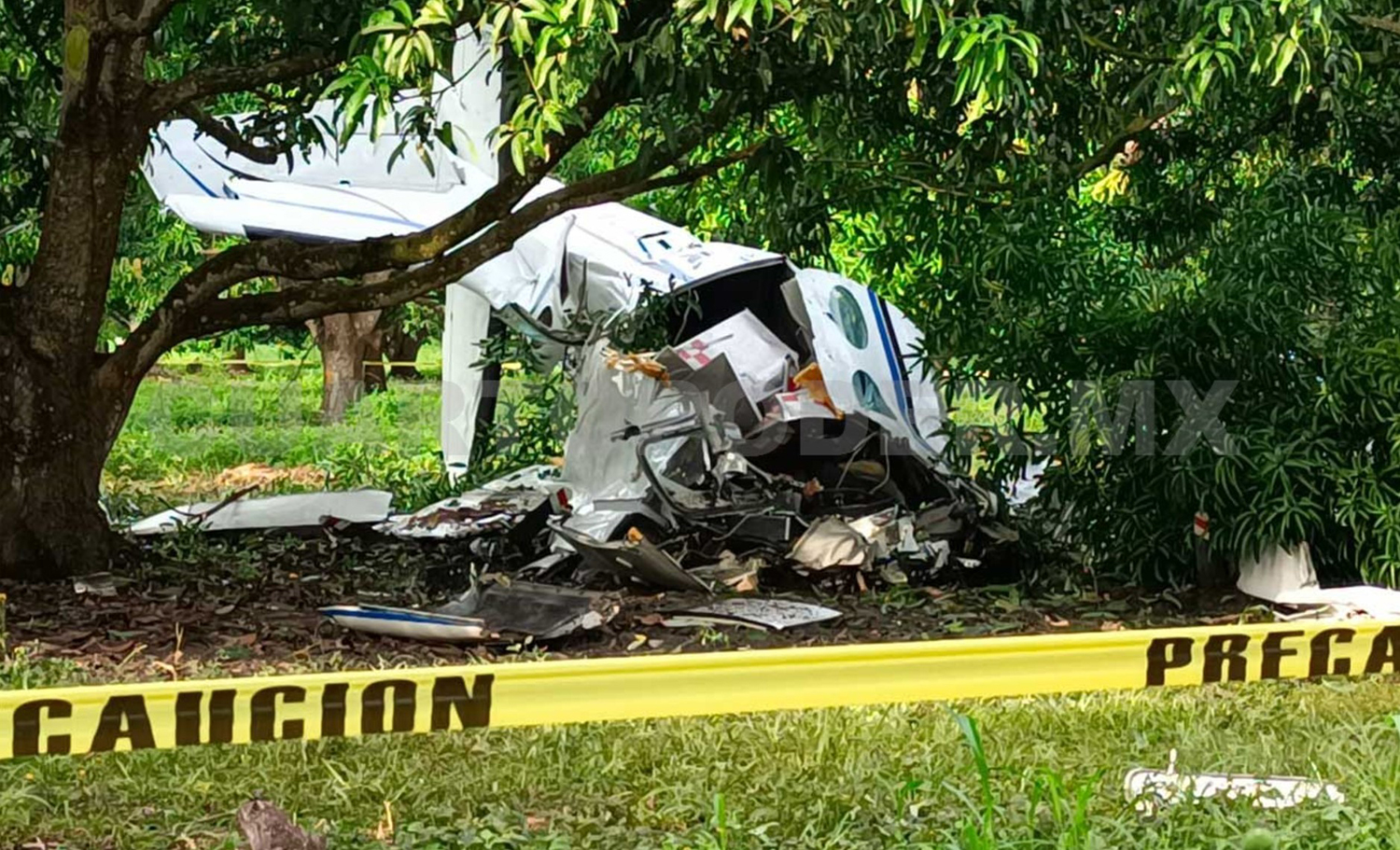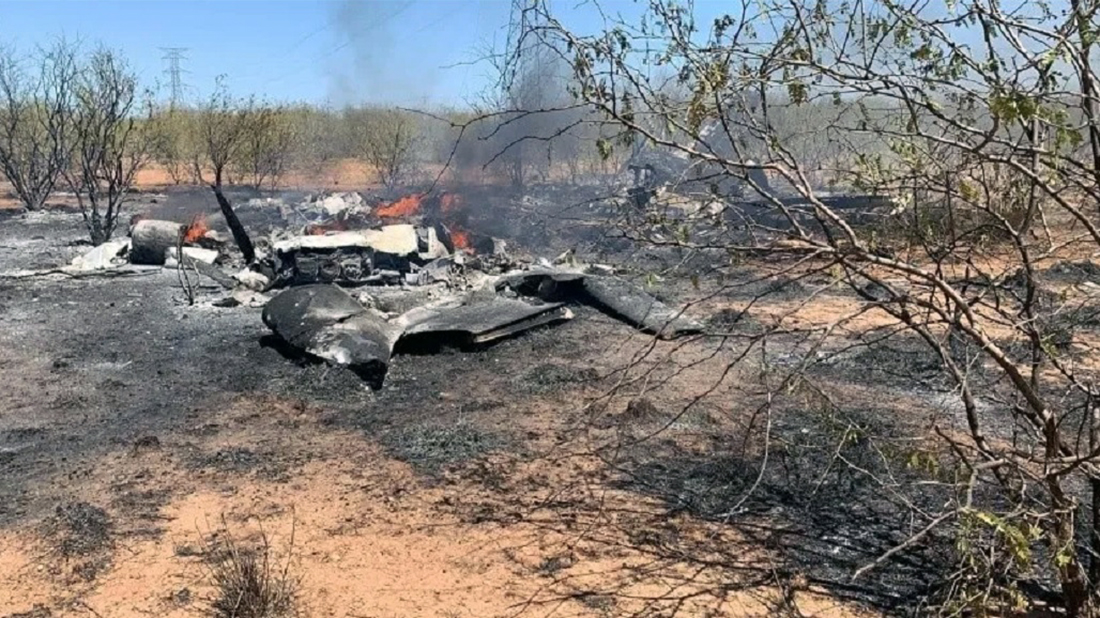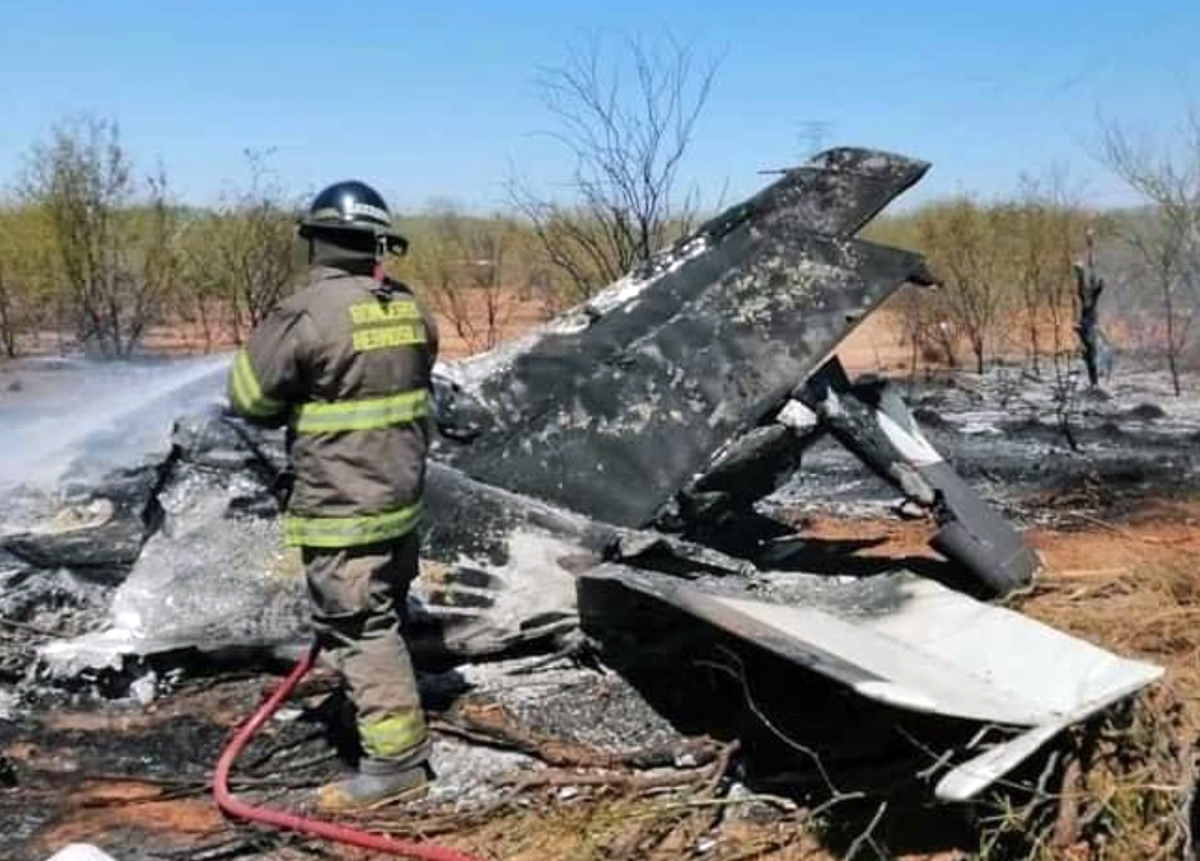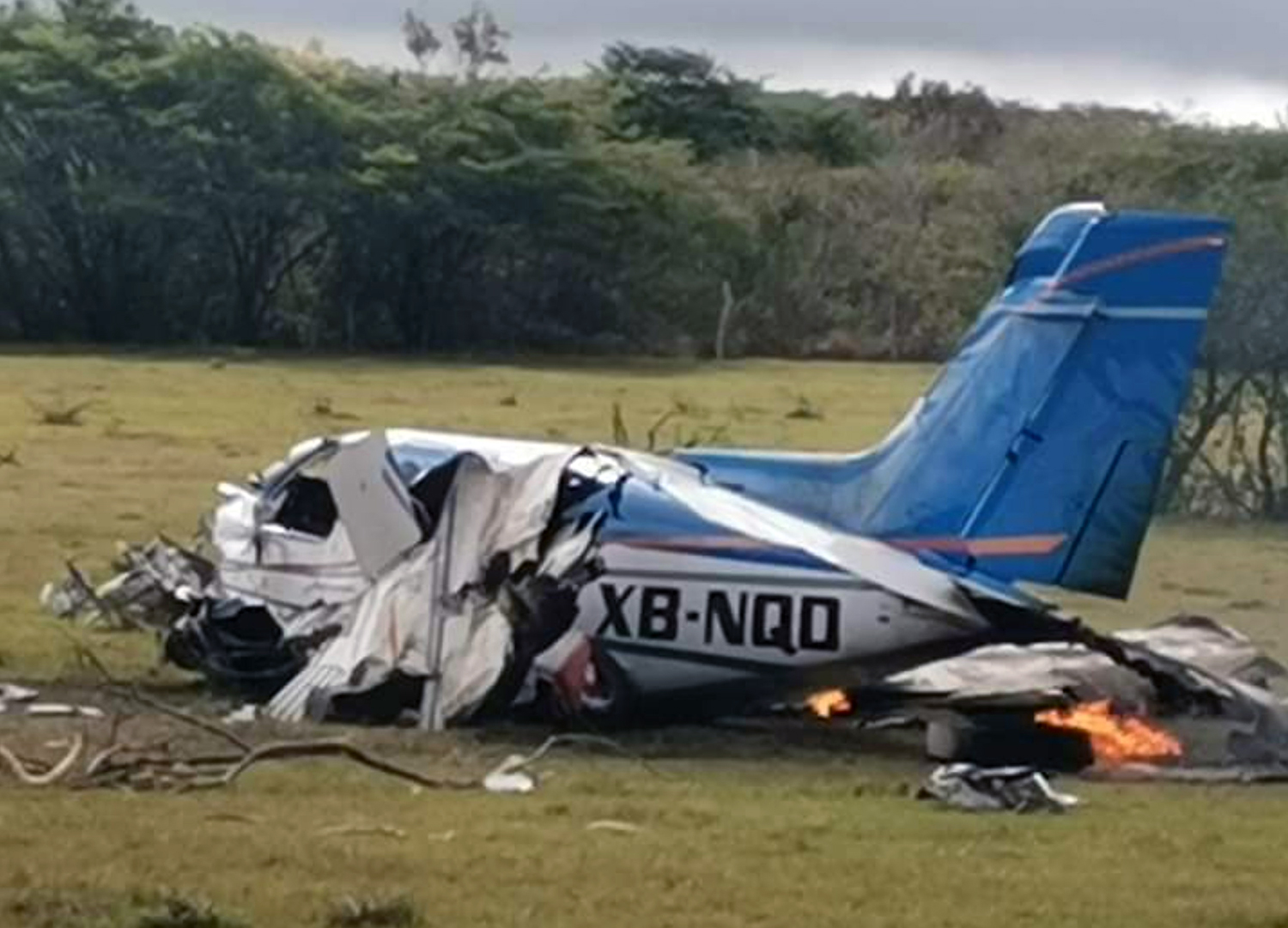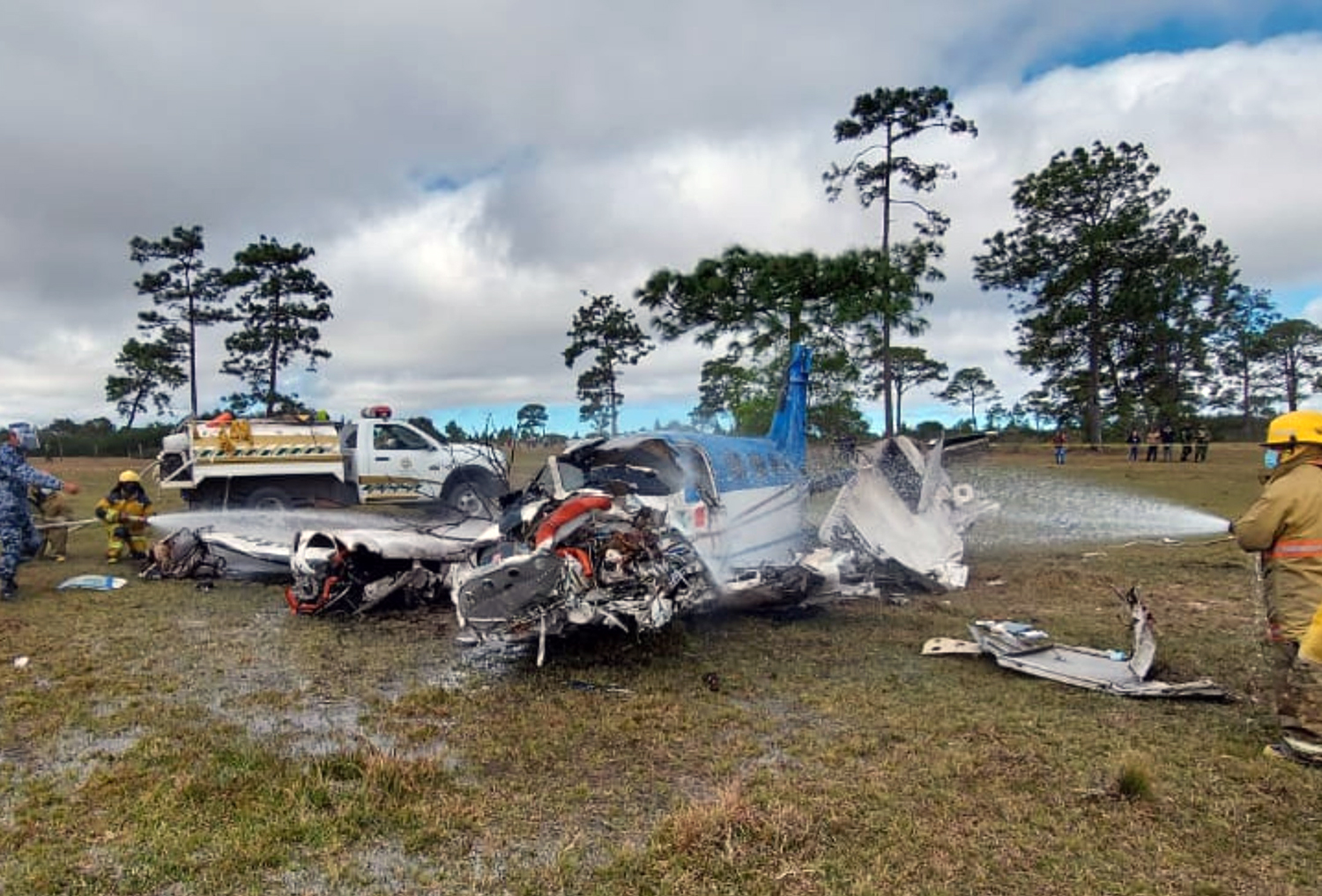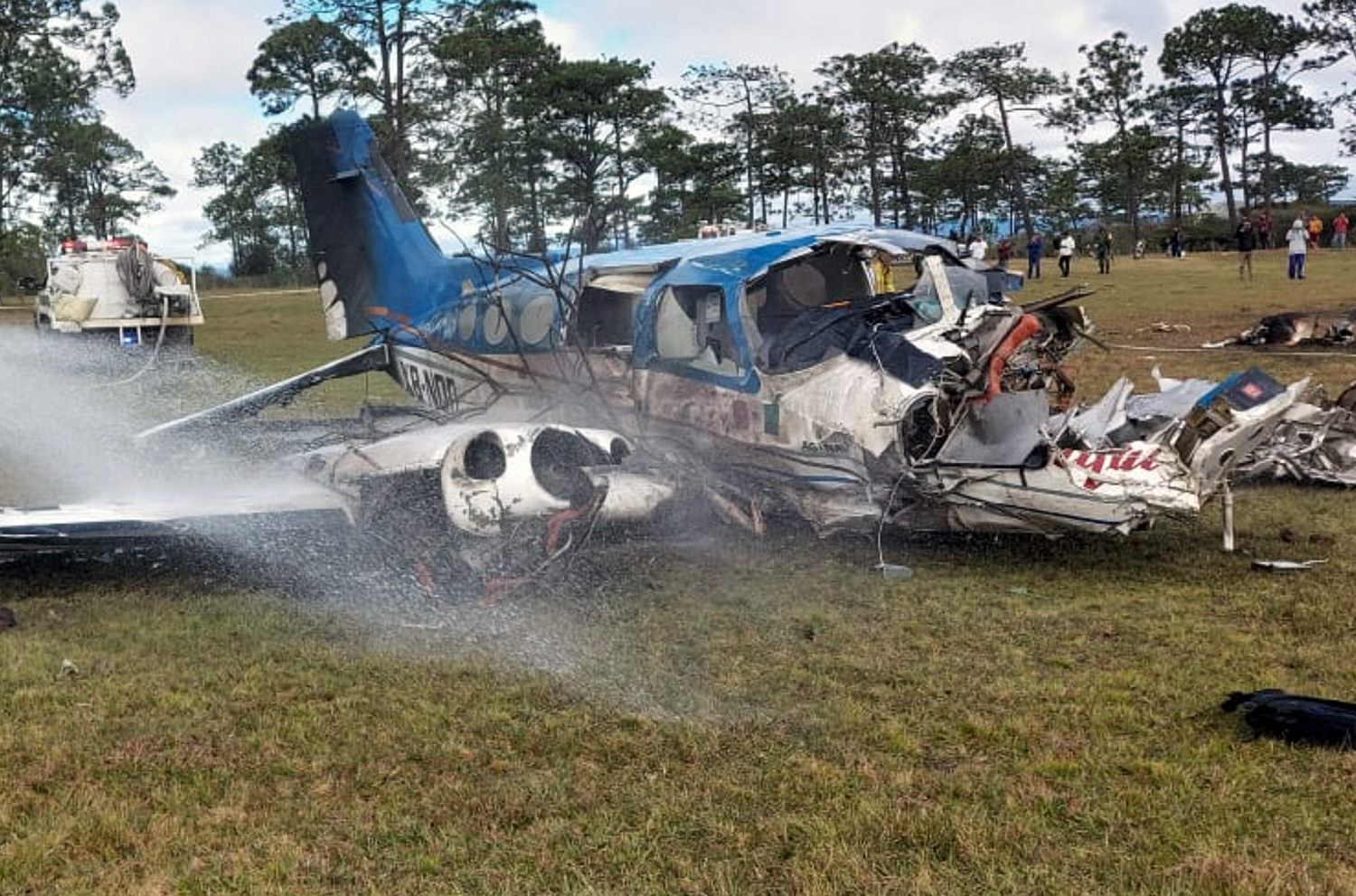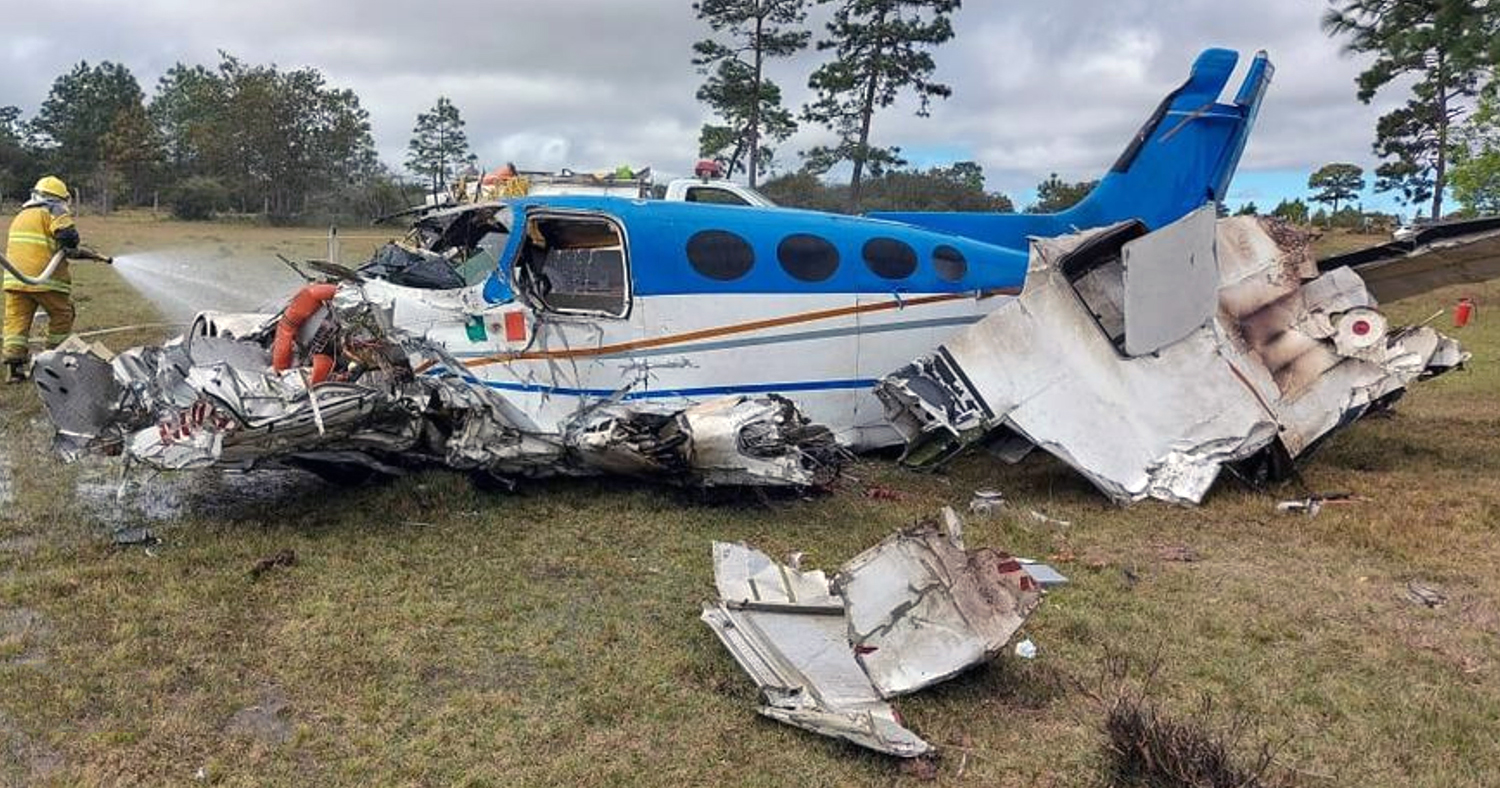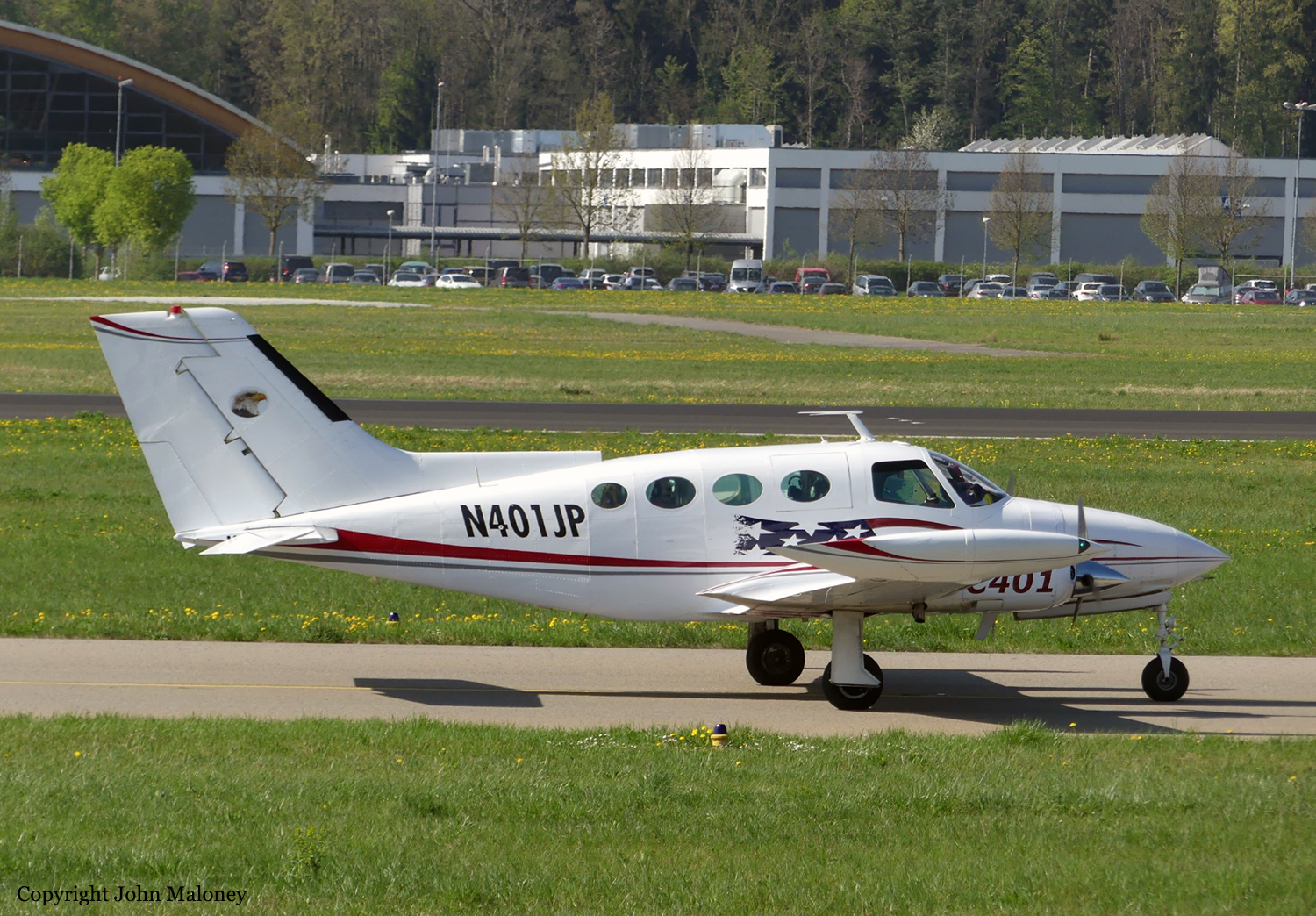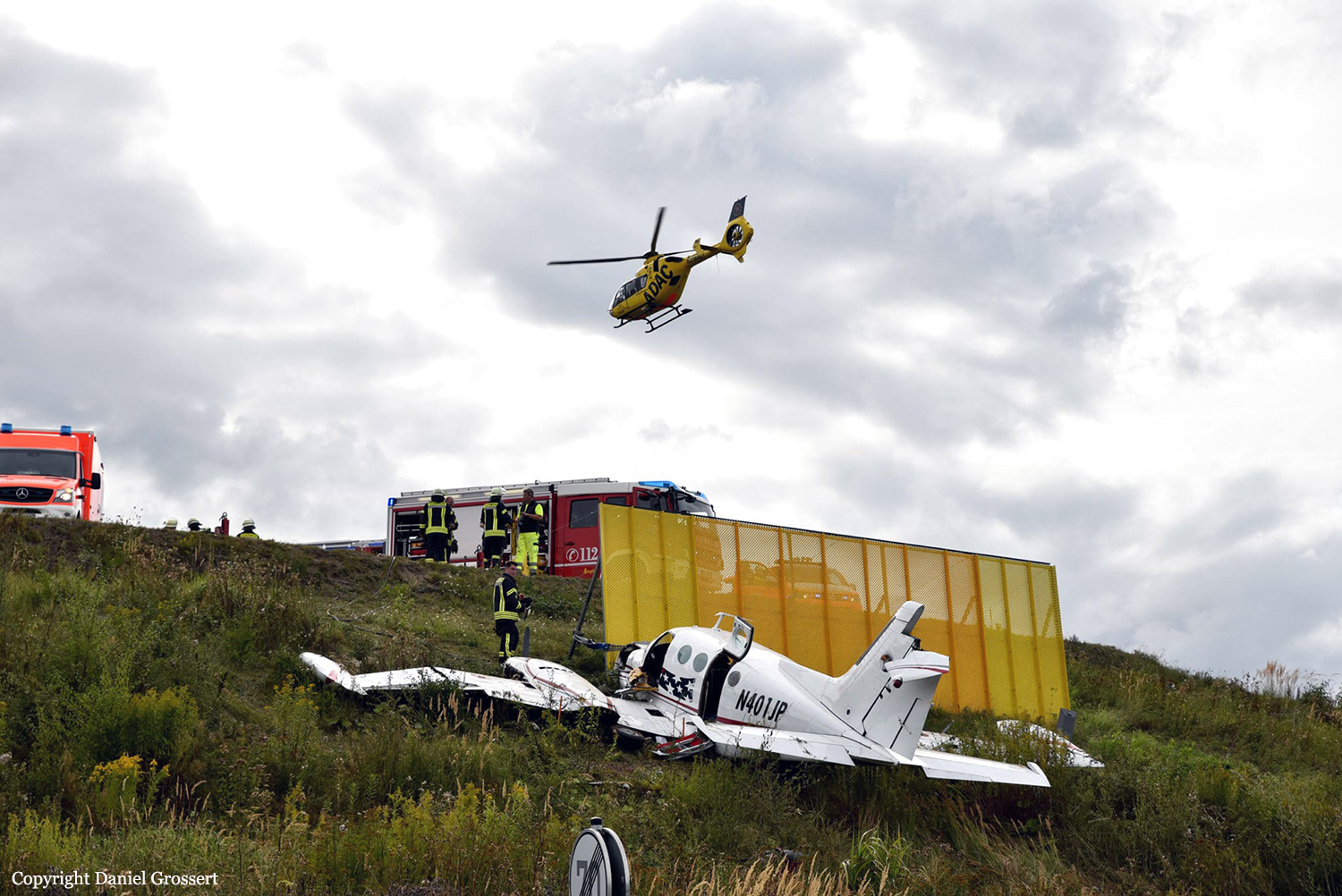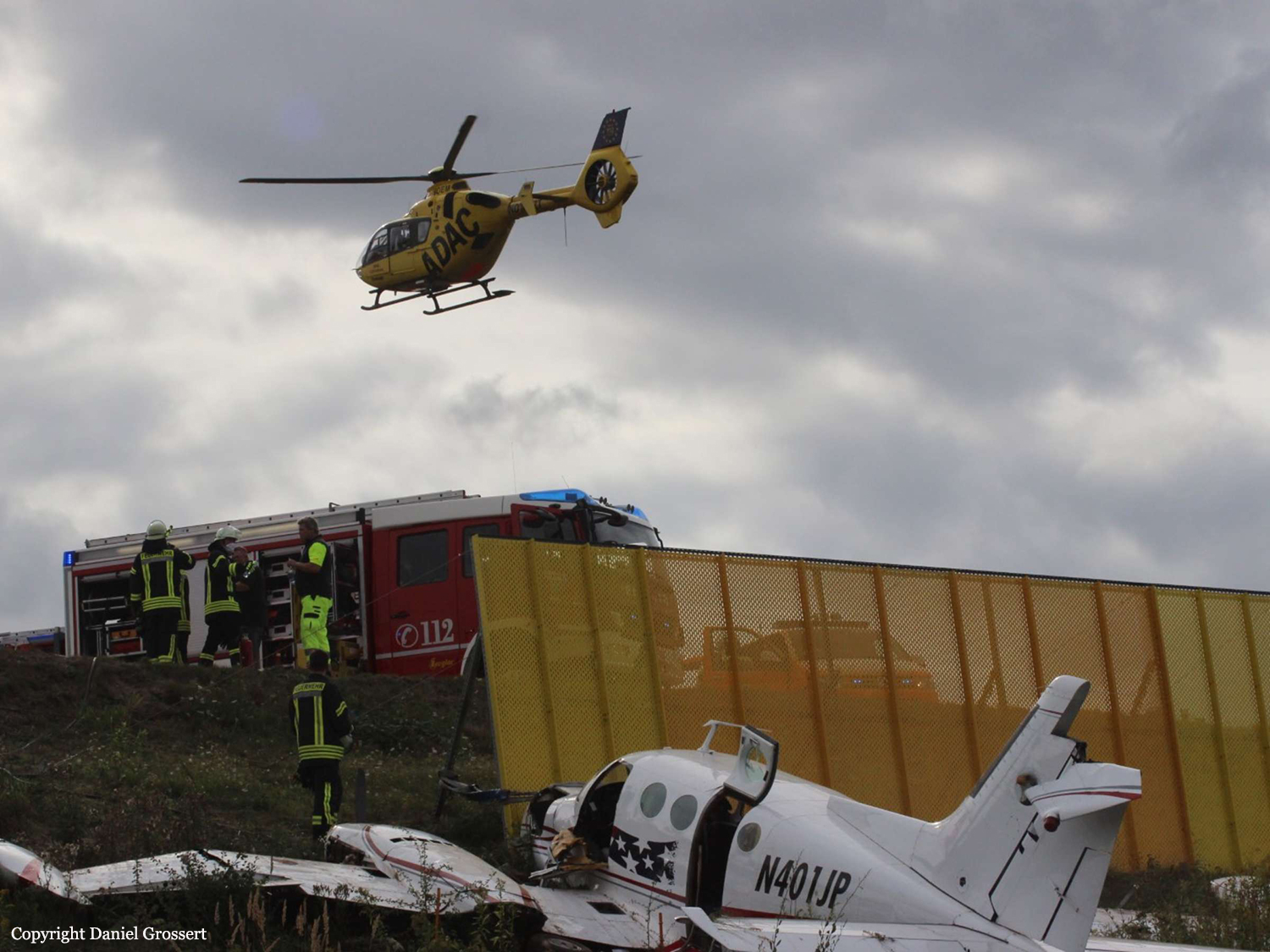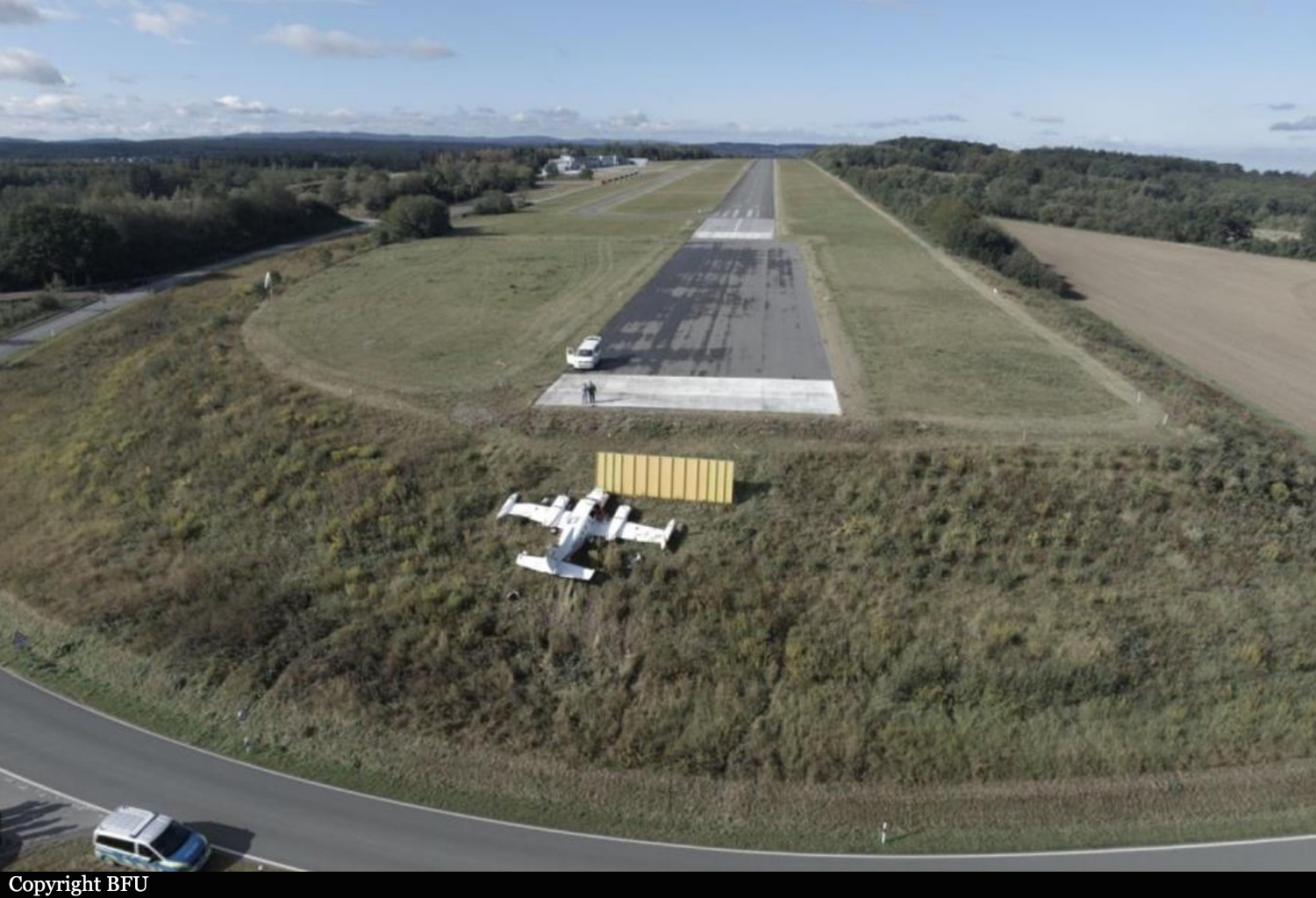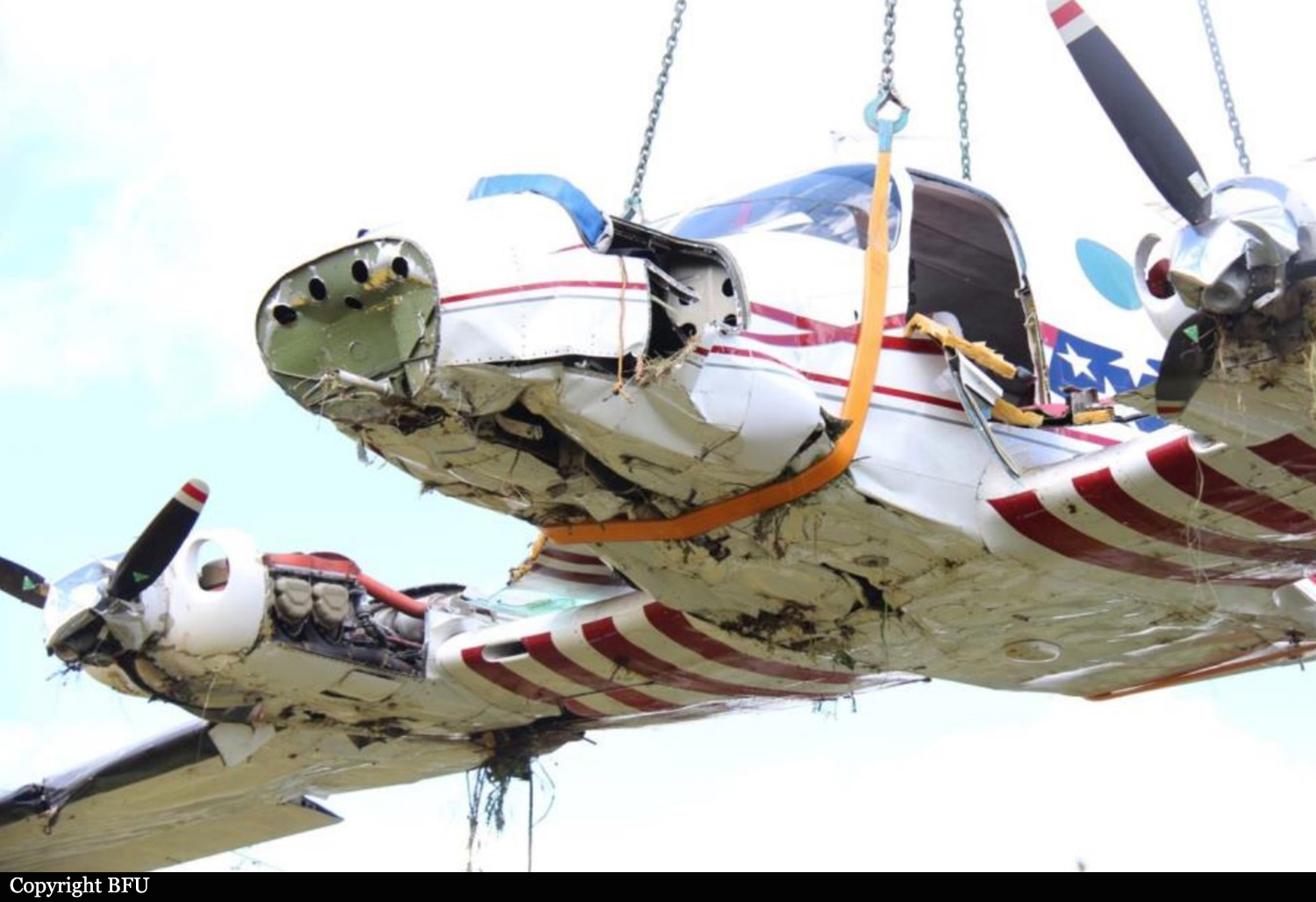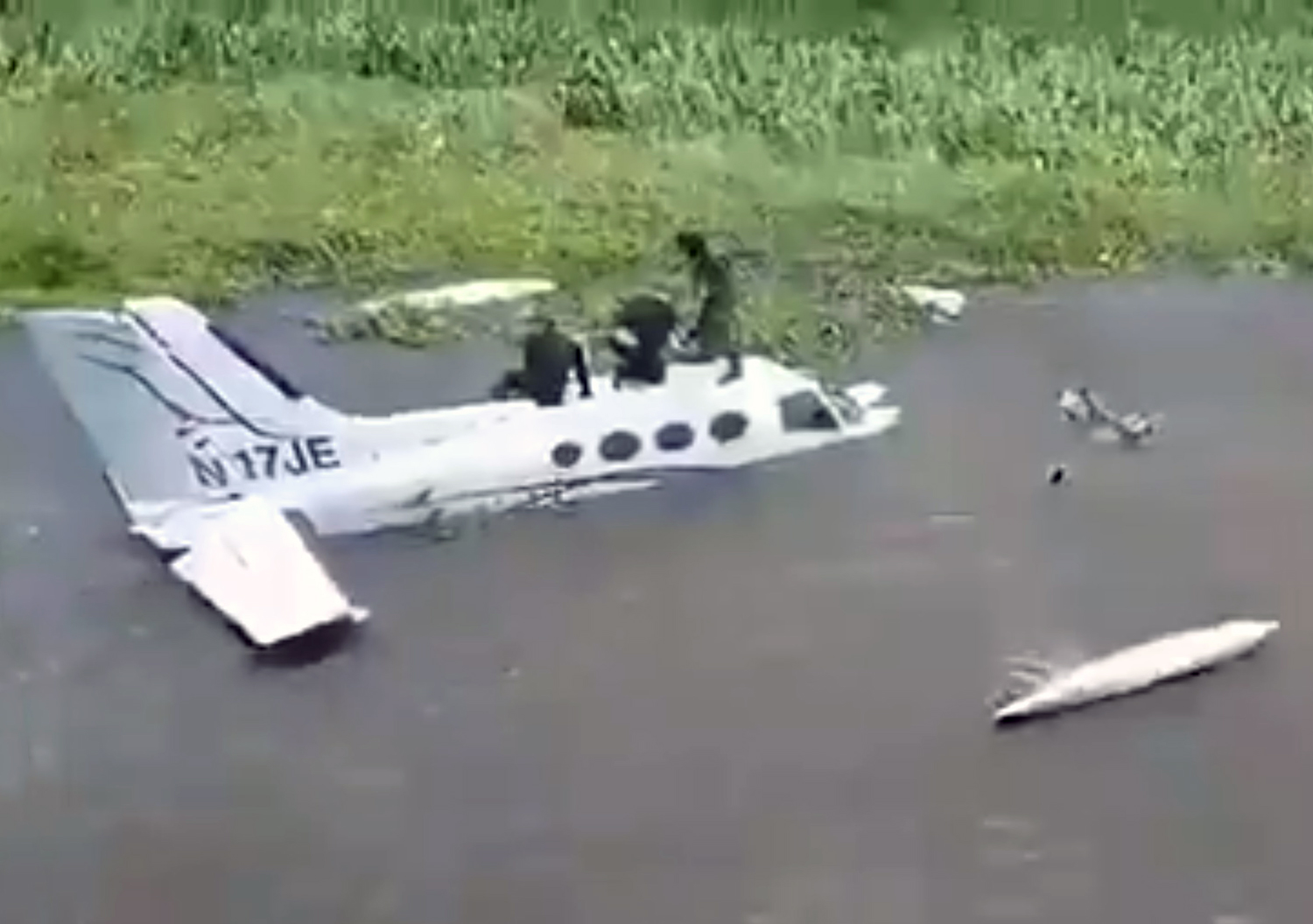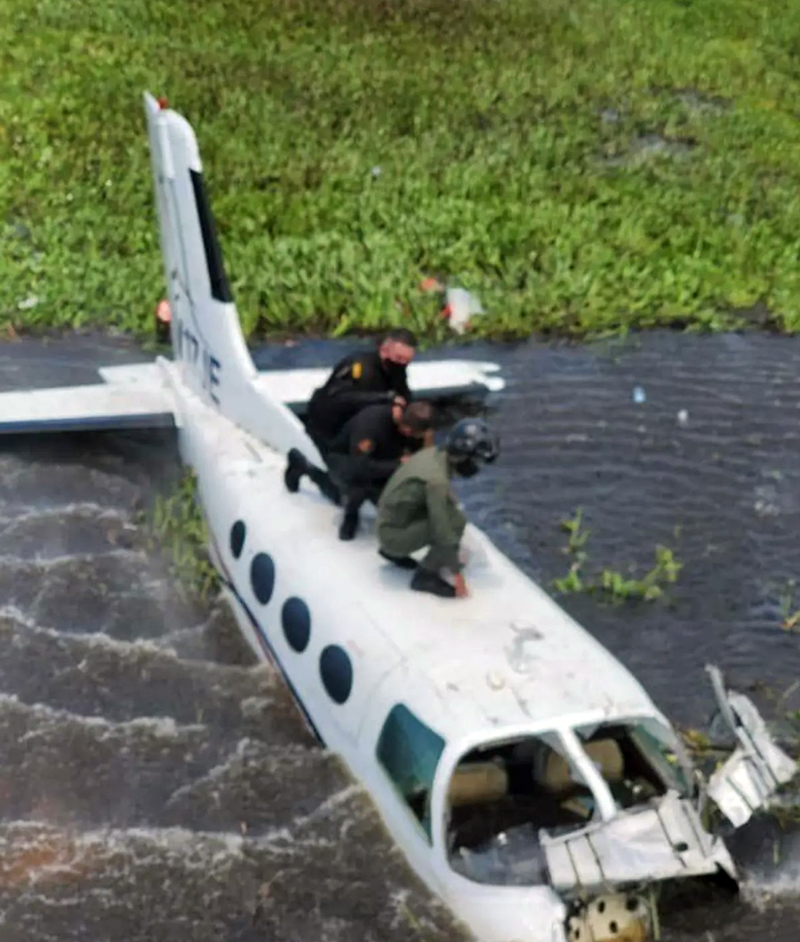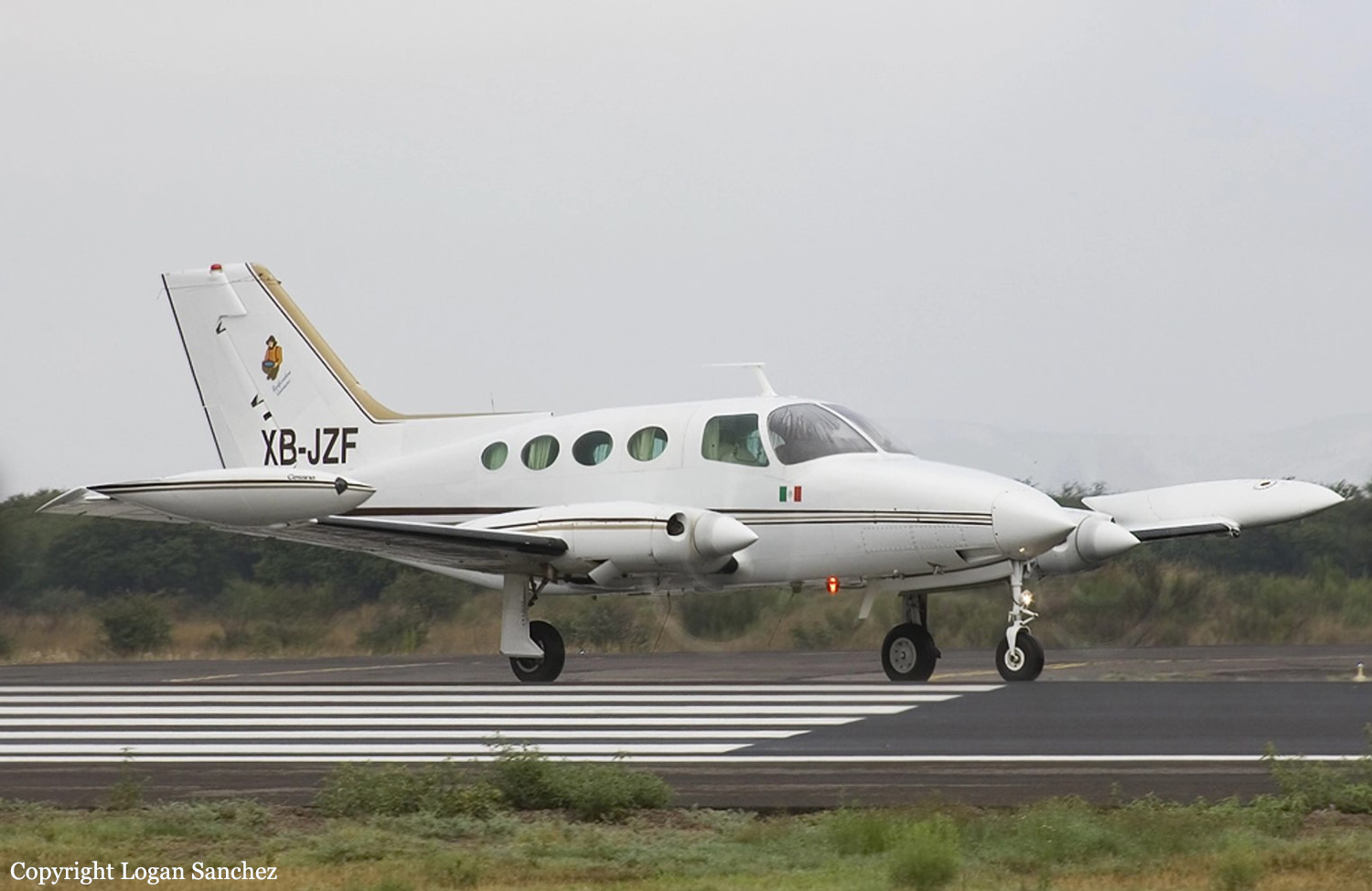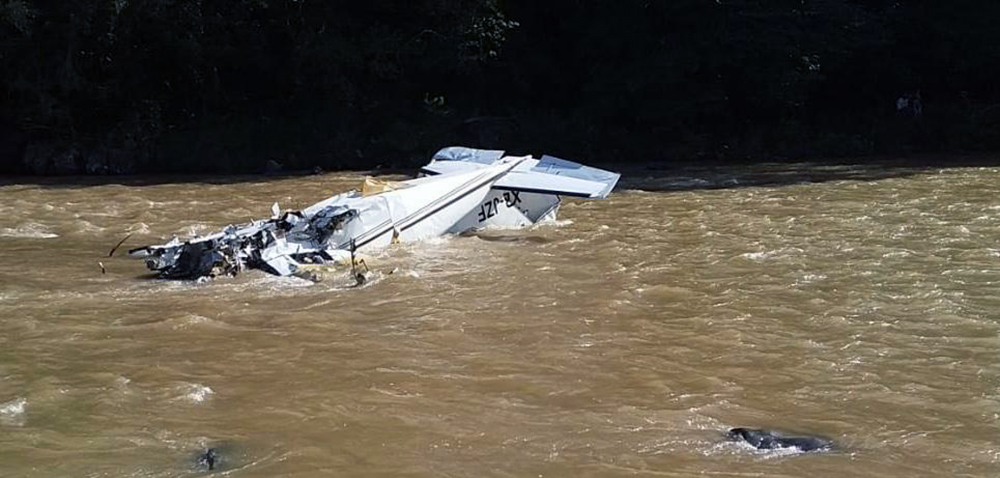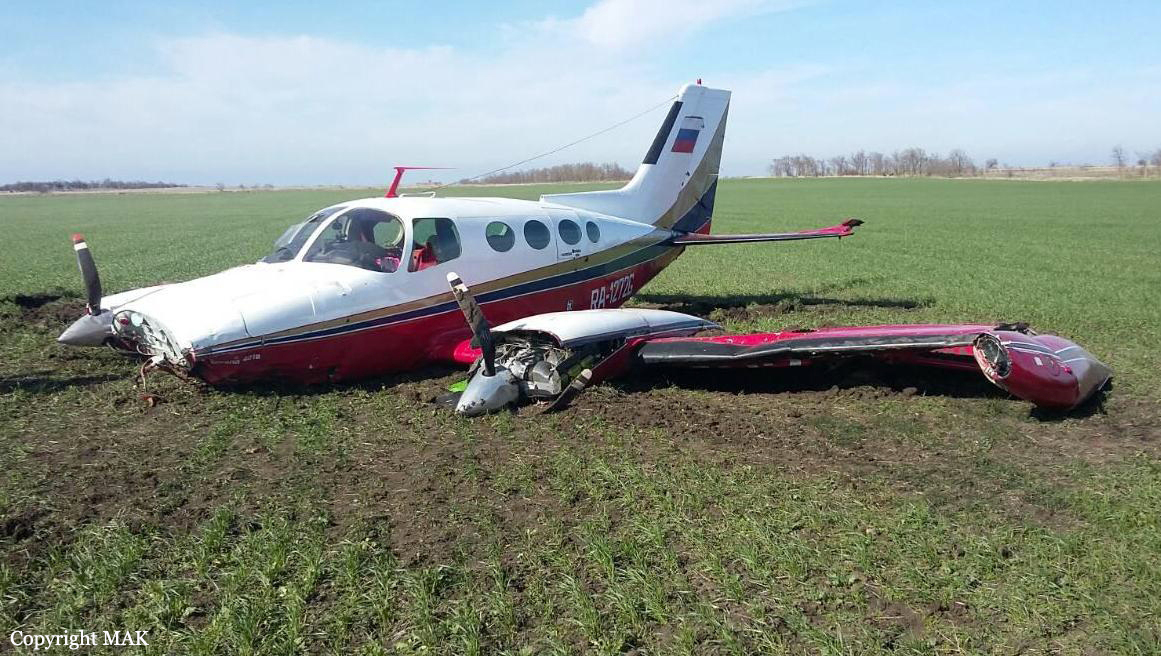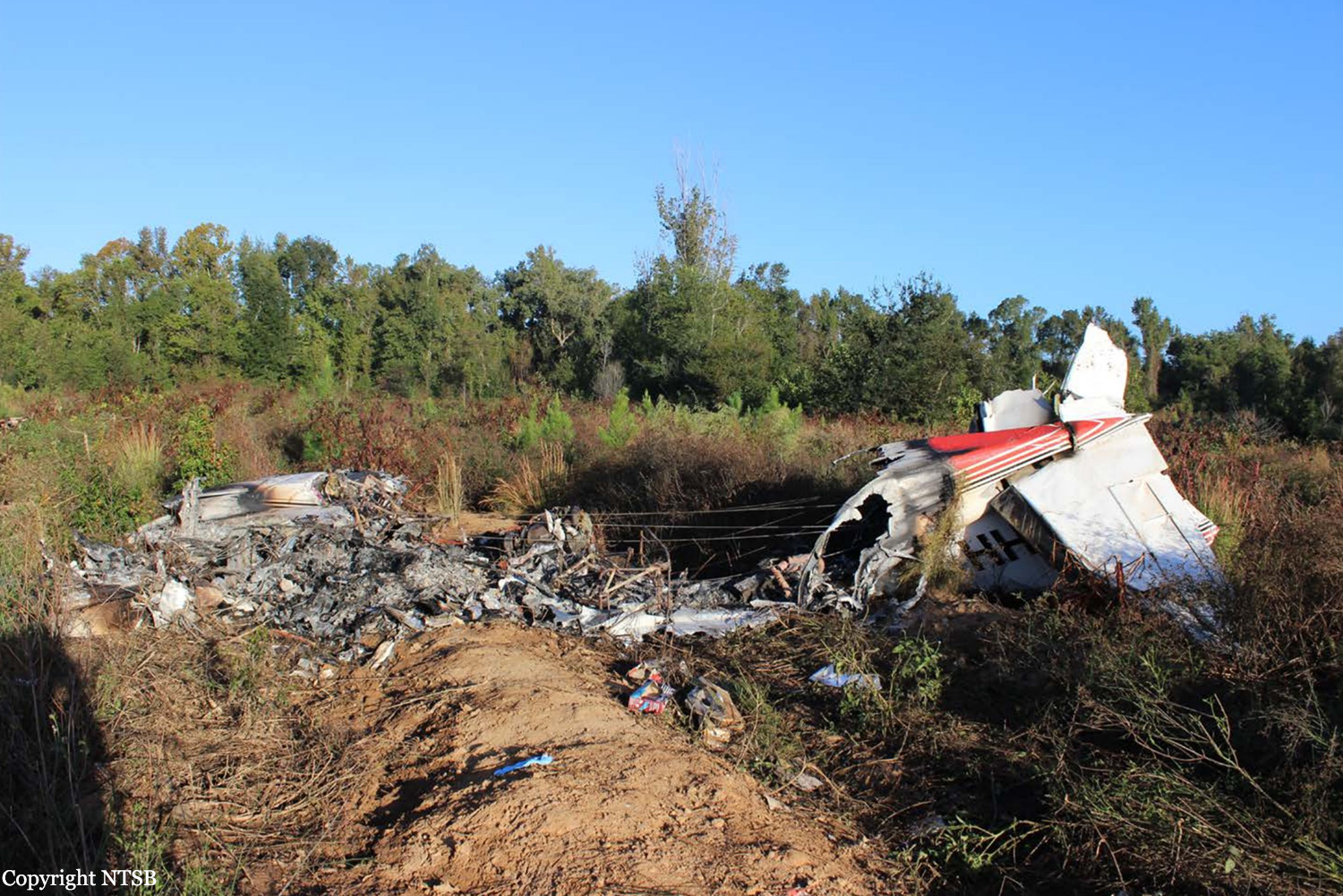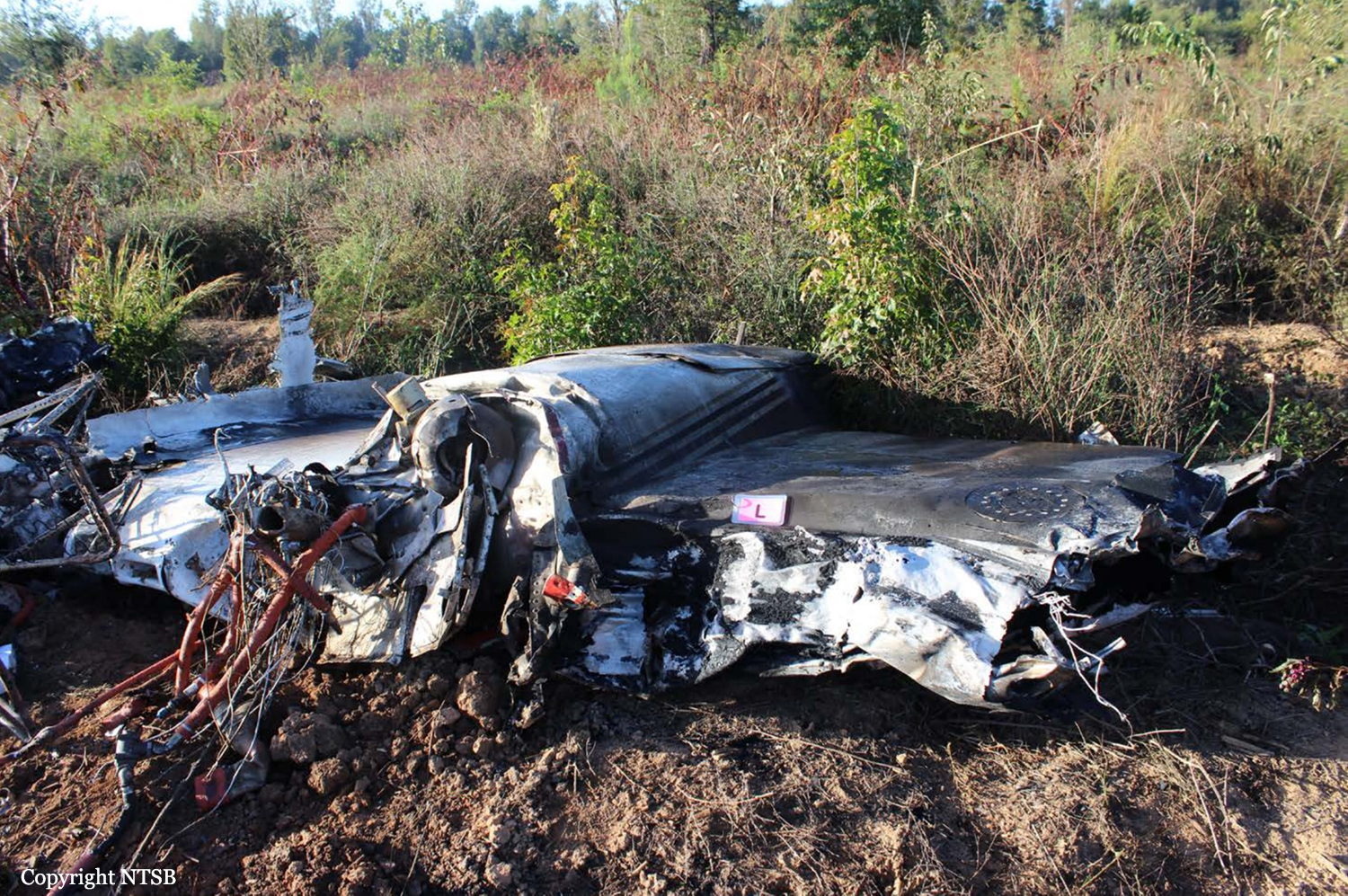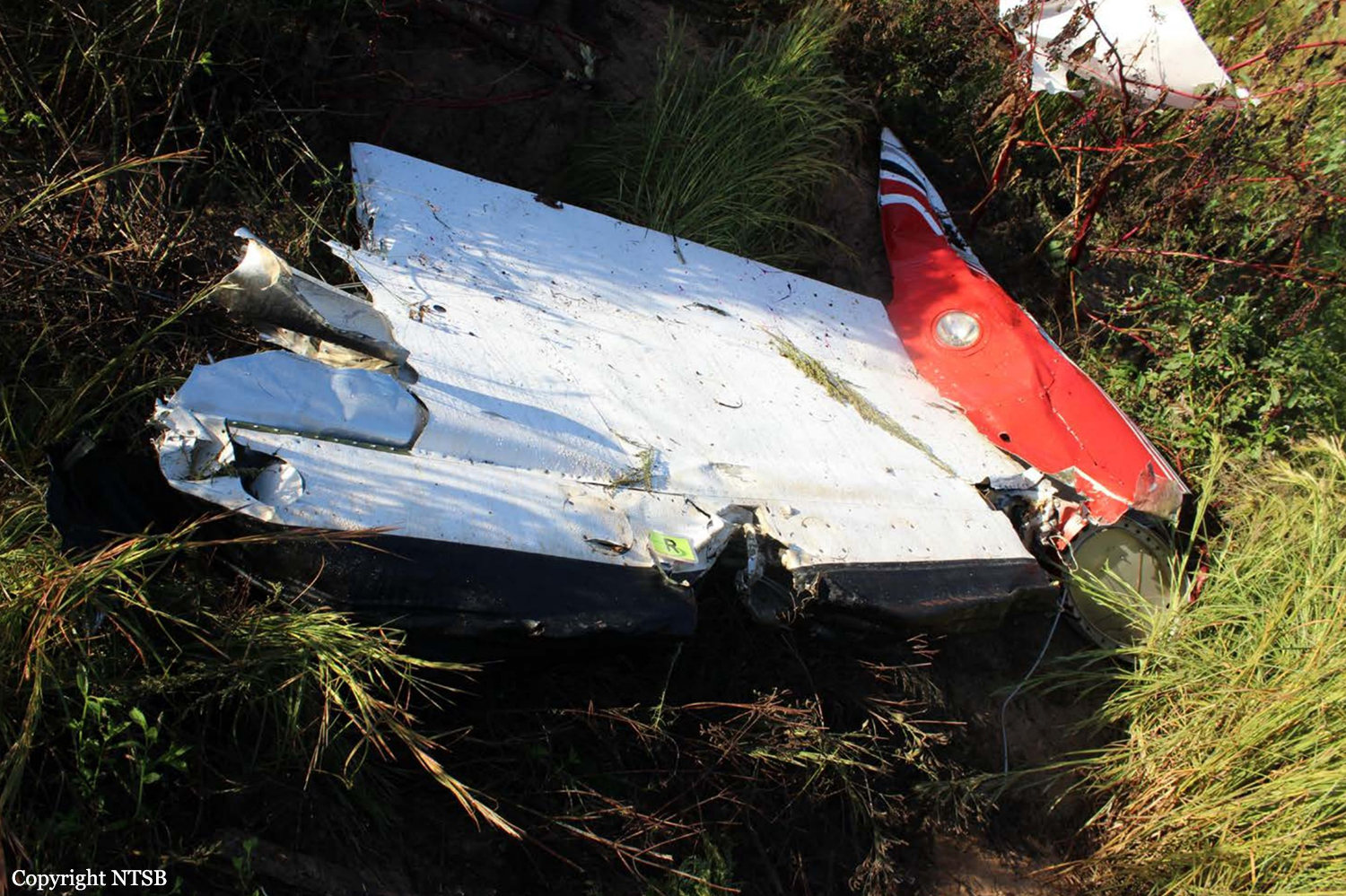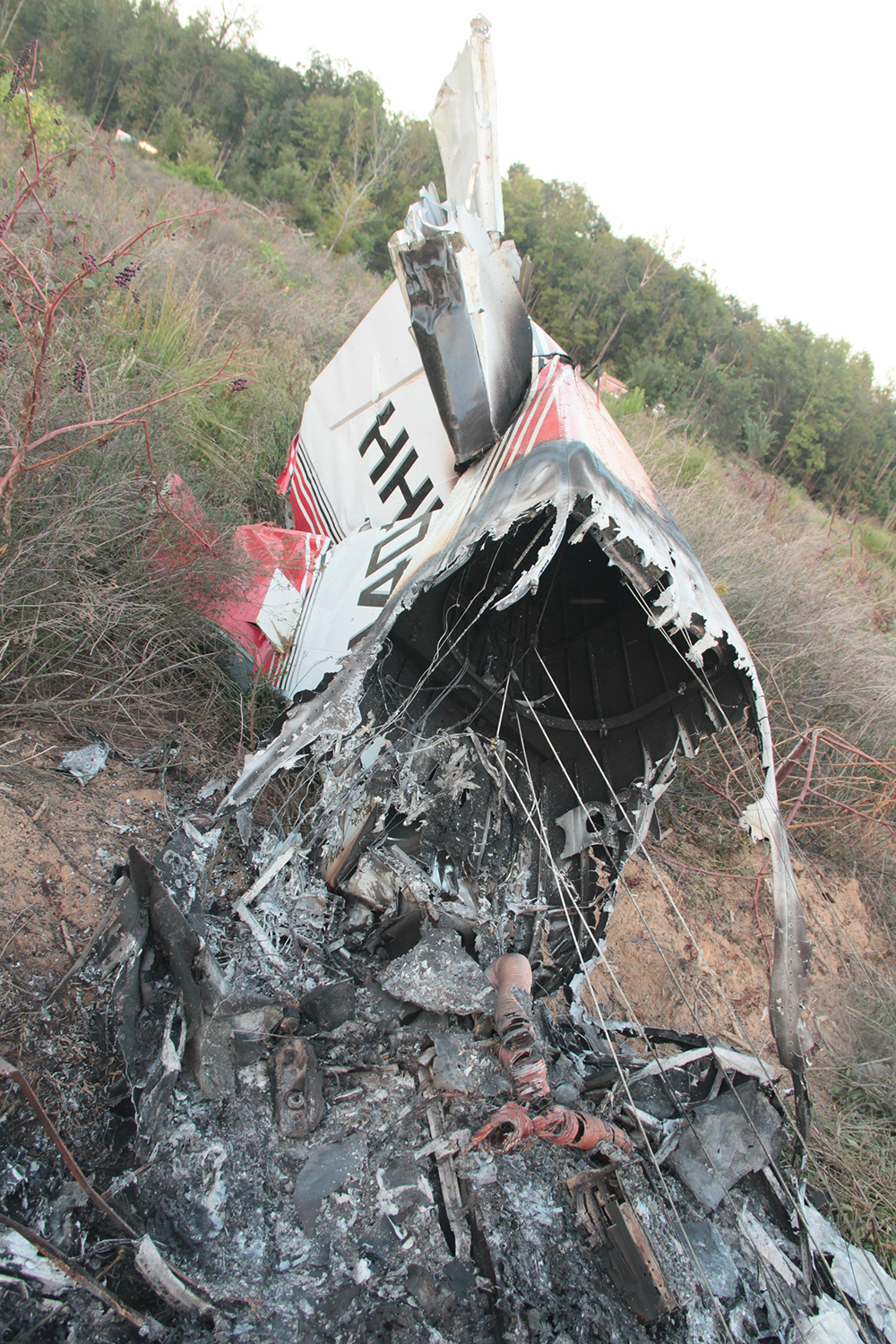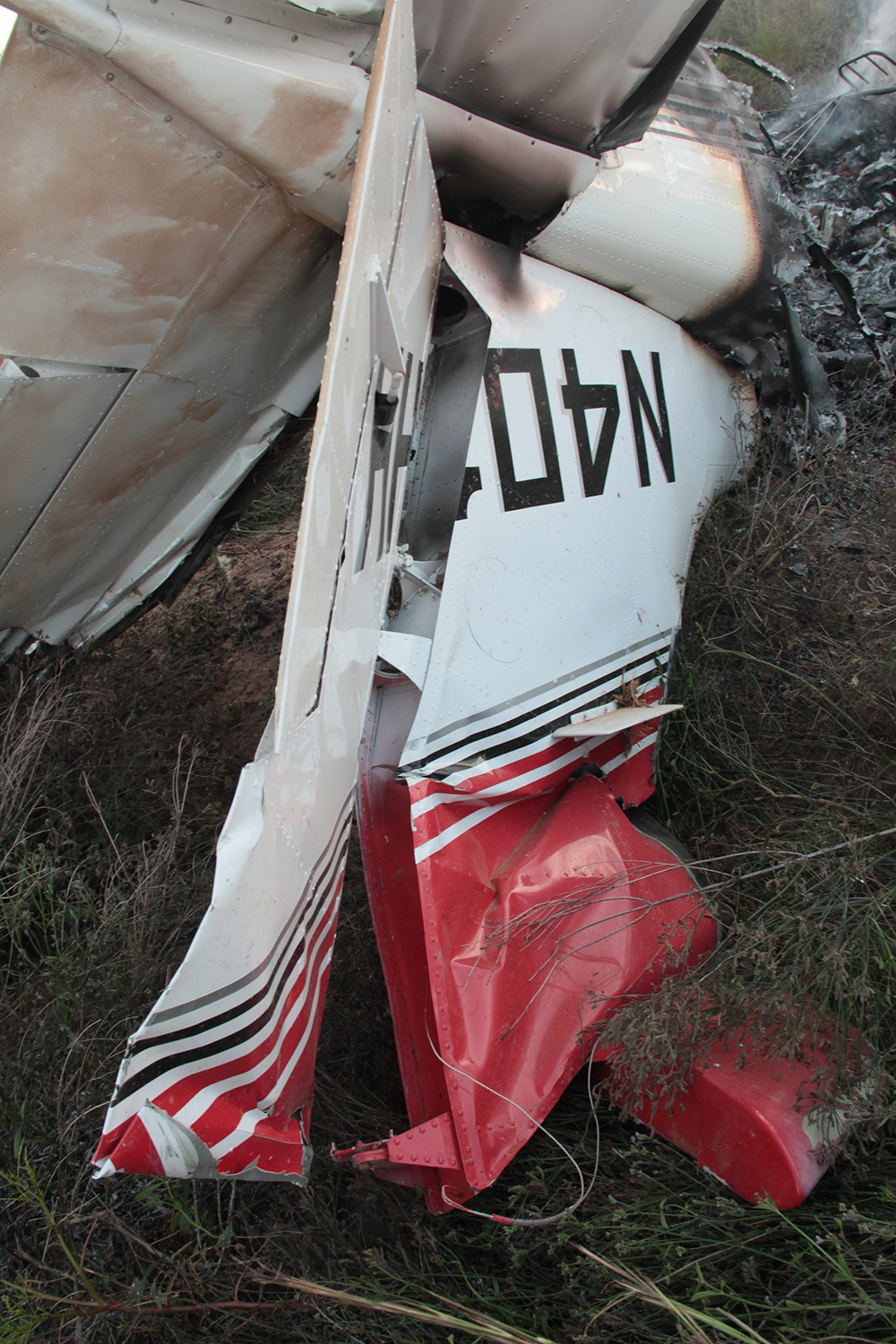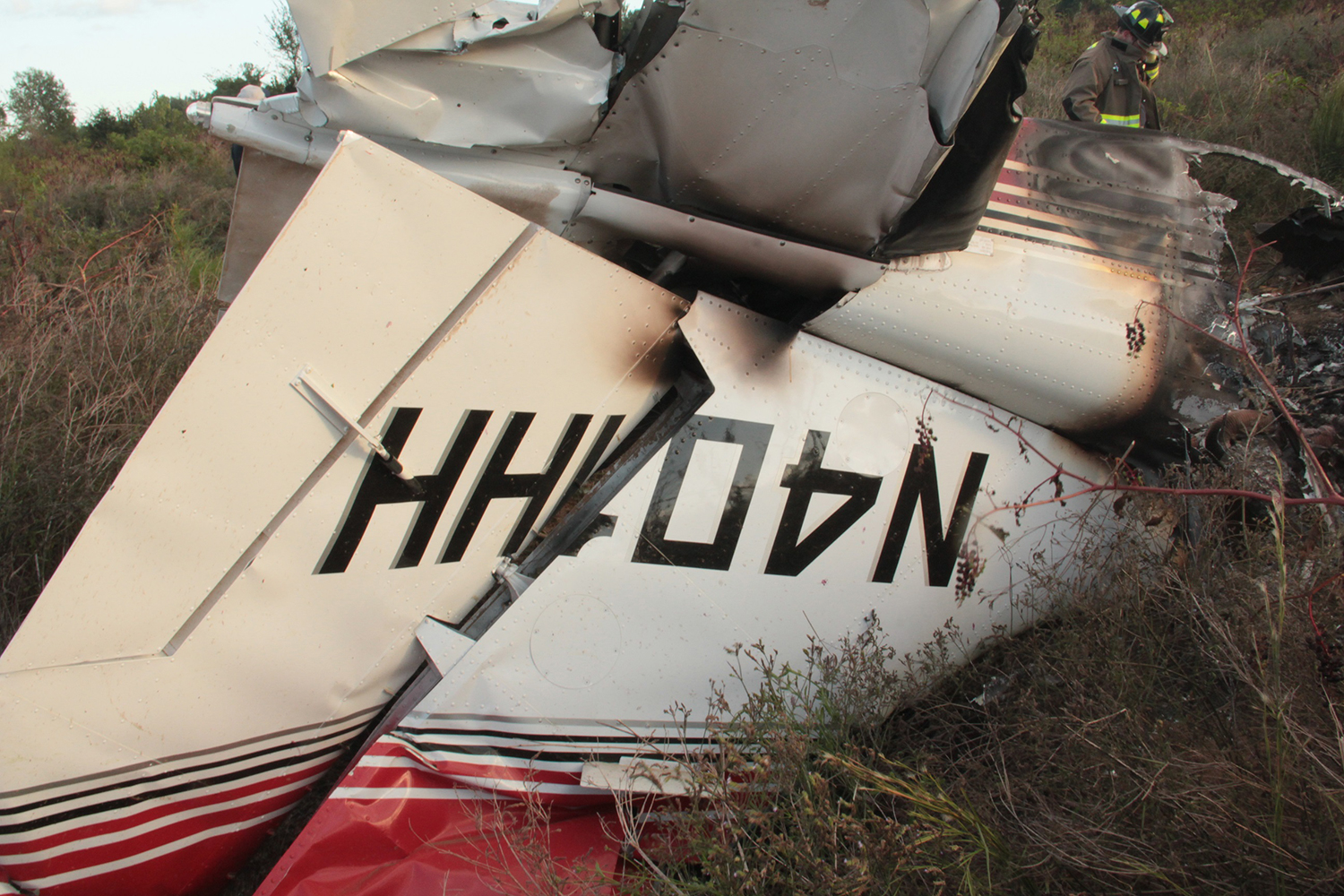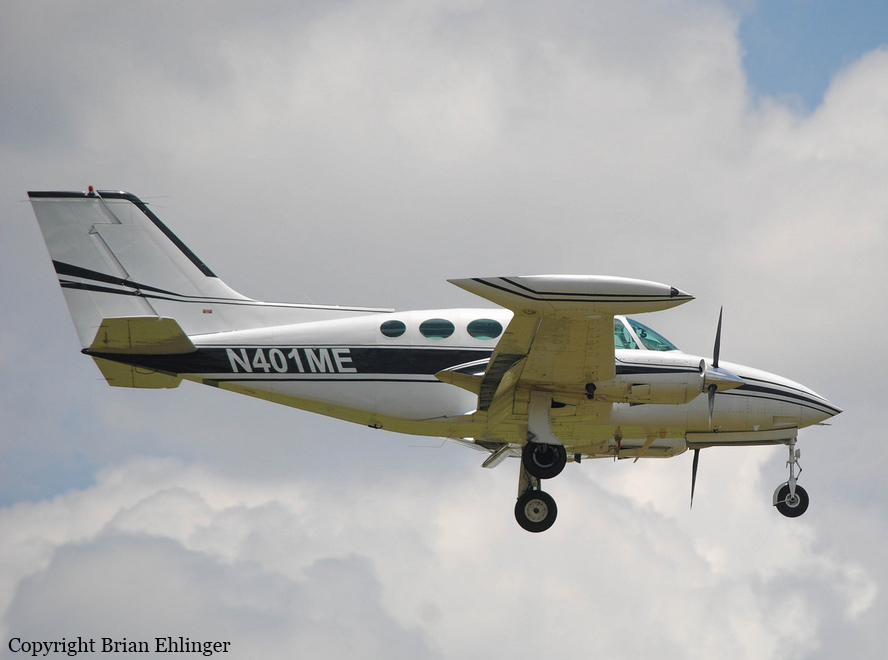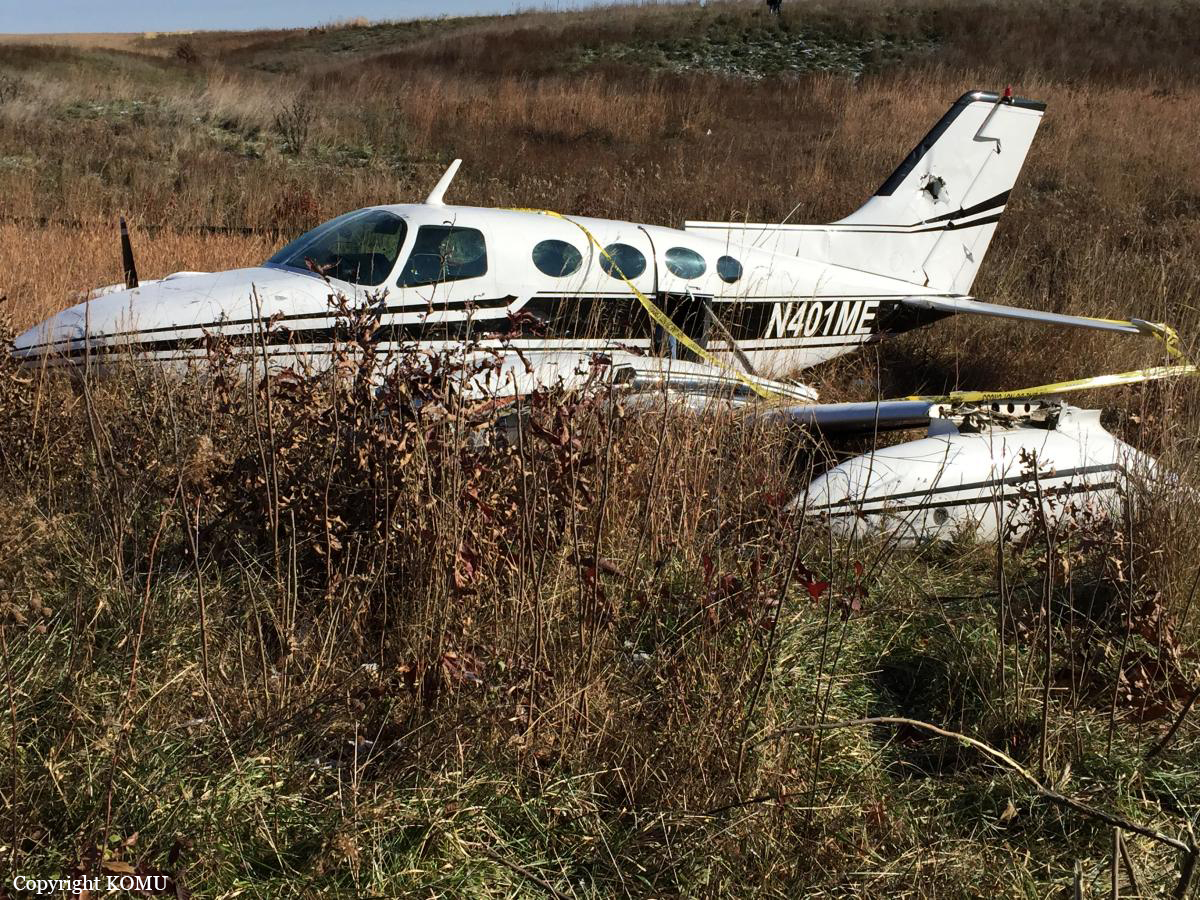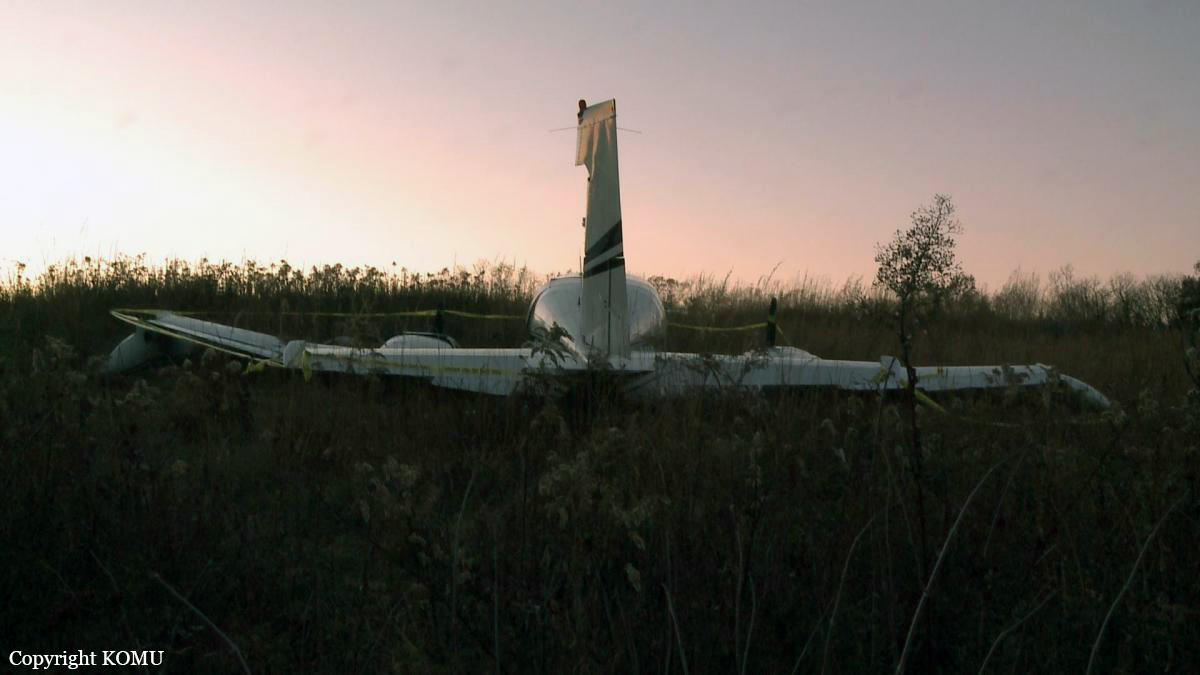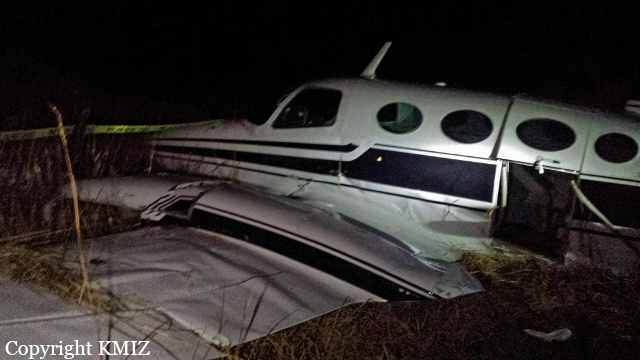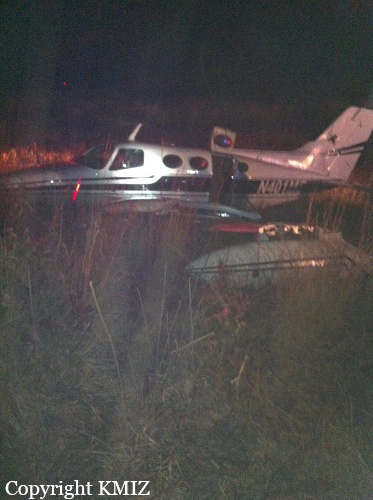Crash of a Cessna 401 in Tapachula: 1 killed
Date & Time:
Oct 19, 2021 at 0716 LT
Registration:
XB-RQE
Survivors:
No
Schedule:
Tapachula – Tapachula
MSN:
401-0268
YOM:
1969
Crew on board:
1
Crew fatalities:
Pax on board:
0
Pax fatalities:
Other fatalities:
Total fatalities:
1
Captain / Total hours on type:
1397.00
Aircraft flight hours:
5237
Circumstances:
The pilot, sole on board, departed Tapachula Airport on a local flight to release Mediterranean flies. A flight plan of four hours was filed, with an altitude of 9,500 feet. The flies should be released in an area corresponding to 60 - 100 NM around the Tapachula VOR. Shortly after takeoff from Tapachula Airport Runway 05, while climbing to an altitude of 1,000 feet, the pilot reported engine problems. The aircraft turned to the right then entered an uncontrolled descent until it crashed in a mango plantation. The airplane was destroyed and the pilot was killed.
Probable cause:
Impact of the aircraft against the ground during a tight turn towards the side of the right engine, which showed inadequate performance.
The following contributing factors were identified:
- Continuing the flight despite intermittent failures in the fuel flow of engine number 2,
- Failure to adhere to the abnormal engine failure procedure during takeoff,
- Fatigue fracture of the fuel pump shaft of engine number 2.
The following contributing factors were identified:
- Continuing the flight despite intermittent failures in the fuel flow of engine number 2,
- Failure to adhere to the abnormal engine failure procedure during takeoff,
- Fatigue fracture of the fuel pump shaft of engine number 2.
Final Report:
